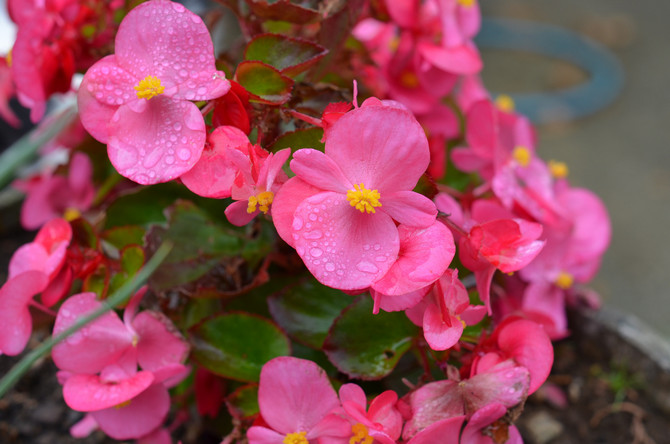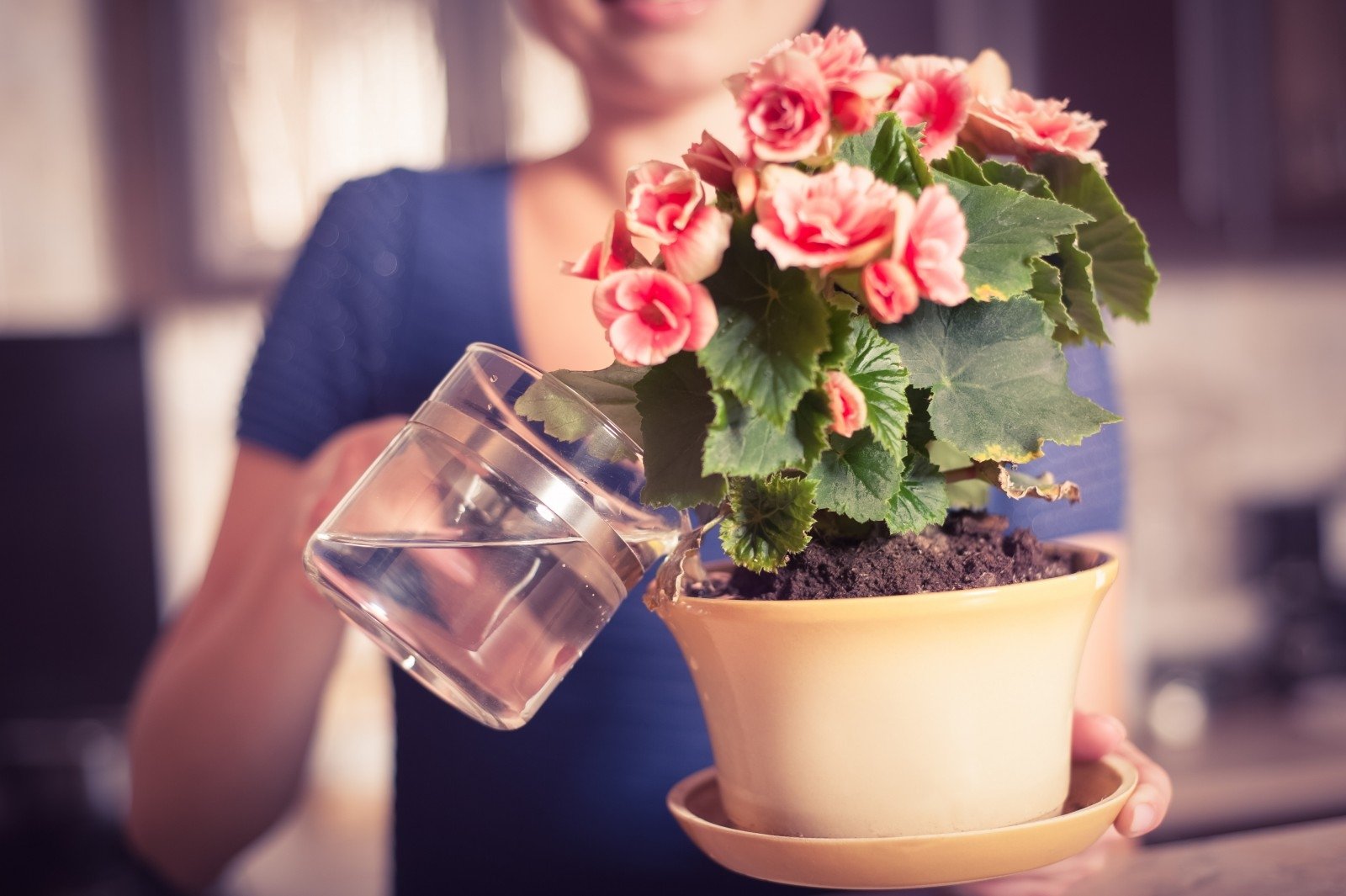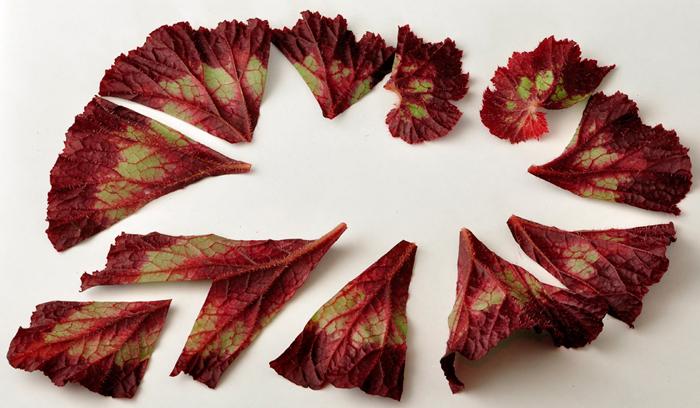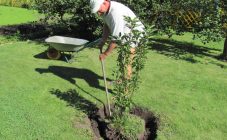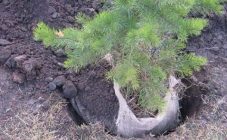Content:
Begonia is one of the most common flower crops in home floriculture. Many people love it for its decorative qualities, beautiful flowering, not too difficult care. There are over 1000 different varieties of begonias in the world. The natural habitat of these flowers is tropical, subtropical zones of Africa, Asia, South, North America.
In 1687, the French scientist-botanist Charles Plumier found and described a beautifully flowering plant. He also named the flower in honor of the Governor of Haiti, Michel Begon.
Rules for growing begonias at home
The plant prefers fertile, light, breathable, loose, slightly acidic soil (pH 5.5). Purchase ready-made soil in the store or do it yourself.
It includes:
- sheet land (2 parts);
- peat (2 parts);
- sand (1 part);
- compost (1 part).
You can add a handful of coniferous earth. To reduce acidity, fluff lime, dolomite flour, wood ash are used. To make the soil looser, add coconut fiber, vermiculite.
Lighting, temperature
Begonias need space and plenty of light. It is best to place the plant pot on the sills of the east or west windows. In summer, it is necessary to shade the flower from direct sunlight using newspapers, cardboard boxes, curtains, blinds. In winter, plants need to be exposed to the sun, as well as to organize additional lighting with phytolamps or daylight devices.
In summer, a comfortable temperature for plants is +20 - 22 degrees. In winter, the temperature regime should be +15 - 18 degrees. A drop in temperature below +14 degrees can lead to the death of a plant, or, on the contrary, an increase in it more than +26 degrees.
Humidity
It is necessary to provide flowers with high humidity (at least 60%). They take a wide pallet, put an inverted saucer in it, on which there is a pot of begonia.
Expanded clay, pebbles are poured around the stand, or moss, peat are placed. Moisten abundantly. Place the plant back on the plate. Periodically add water to the pan.
You can humidify the air around begonias with a spray bottle, put containers with water, an aquarium, a decorative fountain next to the bushes.
Watering
From spring to autumn, the plant is watered abundantly, often (at least 3 times a week). The top layer of the soil should dry out to a depth (1.5 - 1.8 cm). In summer, in the heat, watering is carried out daily. Take settled water at room temperature. Complex minerals are added to the irrigation water every 10 days.
Water the root begonias along the edge of the container. Drain excess water from the saucer. You can place the pot (15 minutes) on a dry napkin or cloth to absorb the liquid.Tuberous plants are irrigated in a tray. Reduce watering for winter. In winter, watered 1 time / 7 - 9 days.
Top dressing
Fertilization is applied every 2 weeks when buds begin to form, as well as during flowering. Flowering crops are fed with phosphorus-potassium substances. Do not use nitrogenous compounds, as the plant may not bloom. Fertilize decorative leafy flowers with nitrogen fertilization.
Reproduction
Begonias are propagated in several ways:
- Seeds. Achenes are sown on moistened soil, slightly pressed into the ground. Cover with a bag, put in a warm place. After 2 weeks, shoots should appear. When the leaves are formed, the seedlings dive into cups.
- Cuttings. Petioles are cut (length 10 cm). Remove the lower leaves, cut the upper leaf plates in half. The cuttings are buried in the ground to the leaves. Cover with plastic bottles. They will take root in a month.
- Sheet. A healthy leaf is cut into segments. Each piece should have streaks (1 - 2 pcs.). Stick the slices into damp ground with slices, cover with a glass or bag. When young growth appears, they are transplanted in containers.
- By dividing a bush or tuber. Divide the plant or bulb into several parts. Sprinkle the cuts with crushed coal. Each plot should have one bud or peephole. They are seated in different pots.
Begonia transplant at home
According to the rules of caring for this flower crop, a young plant should be transplanted once a year. Adult specimens (1 time / 2-3 years).
It is also necessary to plant begonia if:
- the pot has become too cramped, and the roots of the plant have crawled out of the drainage hole;
- bushes grow too thick;
- you need to stimulate flowering;
- flooded the plant;
- begonia is affected by disease or insects;
- after the purchase.
In the latter case, the flower is transplanted only two weeks after it was purchased in the store. Before transplanting begonia, it must go through quarantine, adapt to new living conditions.
An emergency begonia transplant is performed if the plant is flooded or the soil in a pot is of questionable quality.
Begonias are transplanted throughout the spring period, occasionally they can be planted until mid-summer. By autumn, the plants should take root and grow stronger.
How to properly transplant begonia
Step-by-step instruction:
- Before planting begonia, you need to choose a container. It should be larger than the previous pot (3-4 cm).
- Drainage is poured at the bottom of the flowerpot: expanded clay, pebbles, coarse sand. Then put the charcoal. Fill with prepared or purchased soil.
- Before replanting begonia, it is well watered.
- Carefully pull out the stalk. Carefully remove excess soil from the roots.
- Before planting the begonia, immerse its roots in a weak solution of potassium permanganate for 30 minutes (it should be slightly pinkish).
- Remove damaged, rotten, moldy fragments. Wash in clean water, dry a little.
- The bush is placed in a pot, covered with earth, leaving the distance of the flowerpot to the edges (1 cm). Water the plant. Fill up the soil after 2 - 3 weeks.
How to transplant begonia at home with a tuber
Planting a tuberous culture is carried out as well as planting a rhizome plant. However, the onions are not deeply embedded, leaving them practically on the surface. When sprouts appear, sprinkle with earth (layer 3 cm).
Is it possible to transplant flowering begonia - this question is asked by many growers. The only answer is no. It is necessary to wait for the plants to bloom.
Transplanting and growing begonias is not difficult. Even a novice florist can handle it. The main thing is to follow all the rules.
